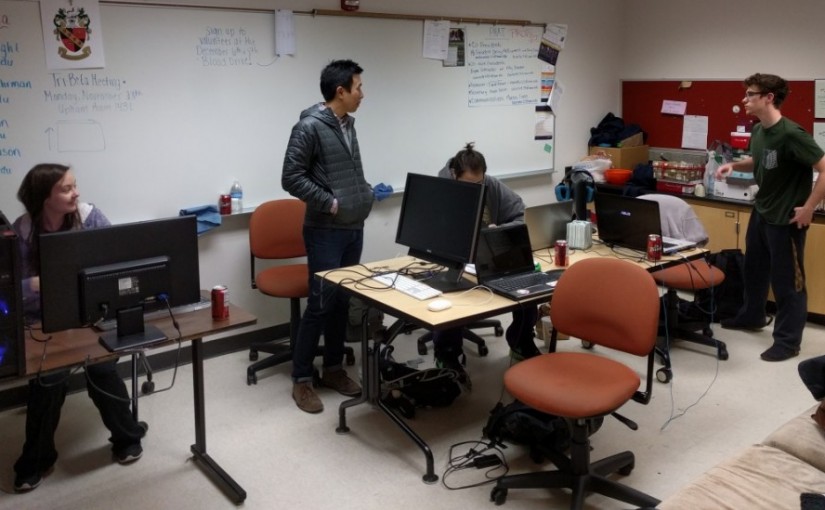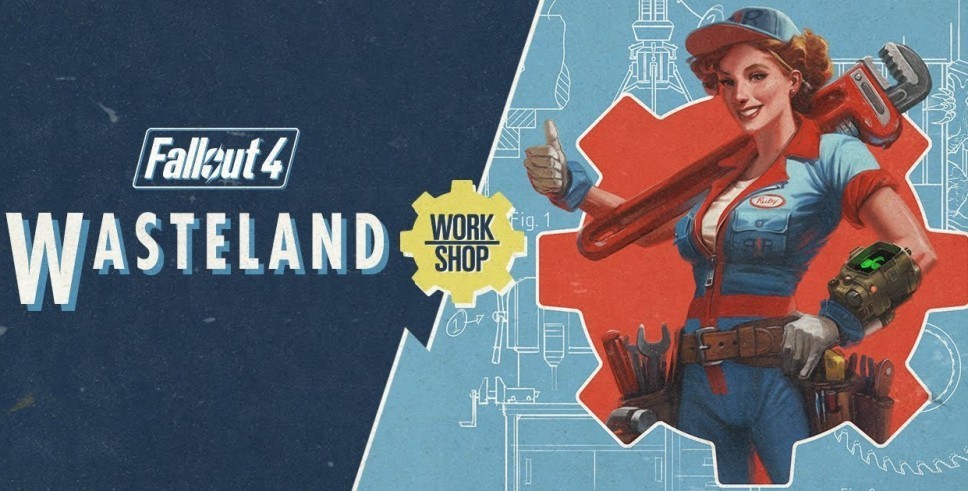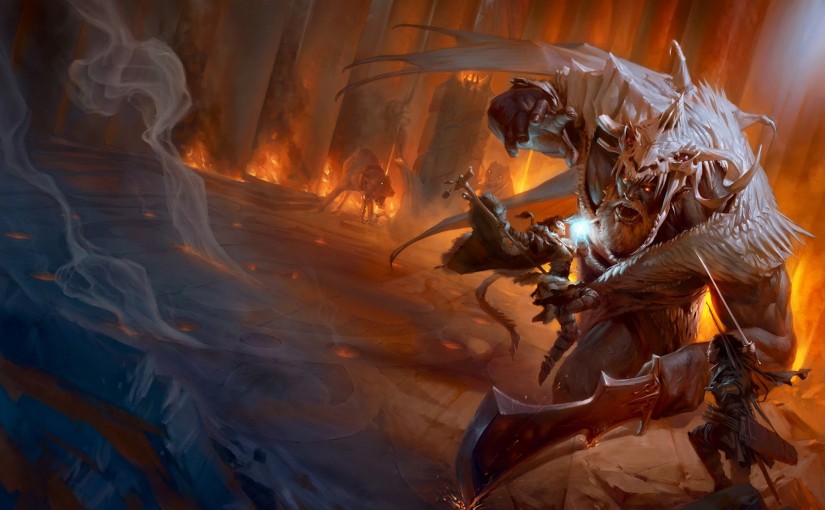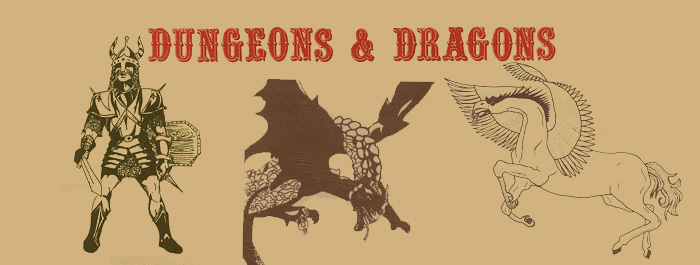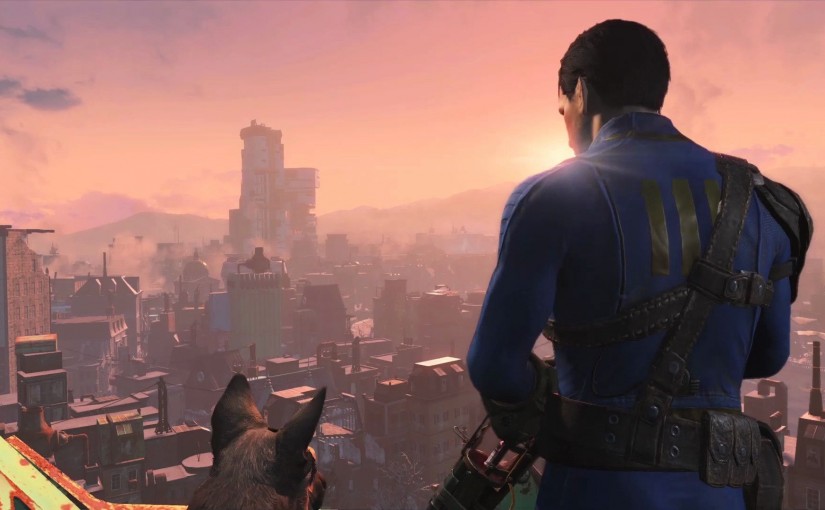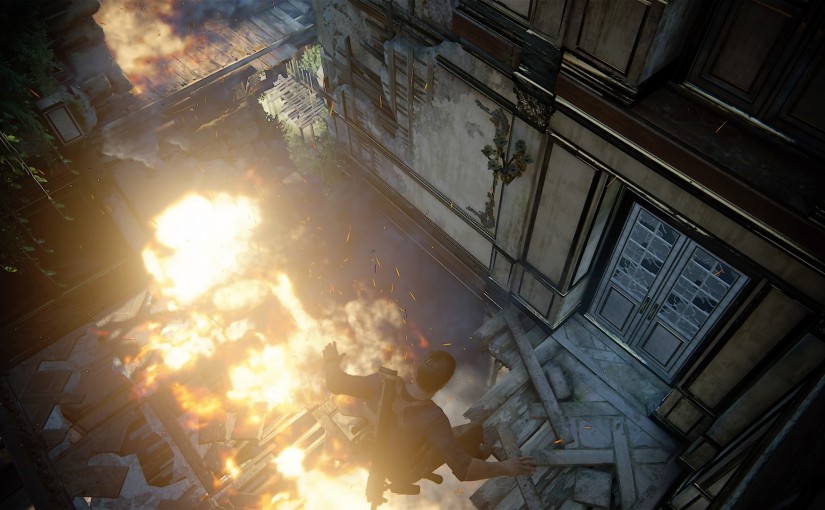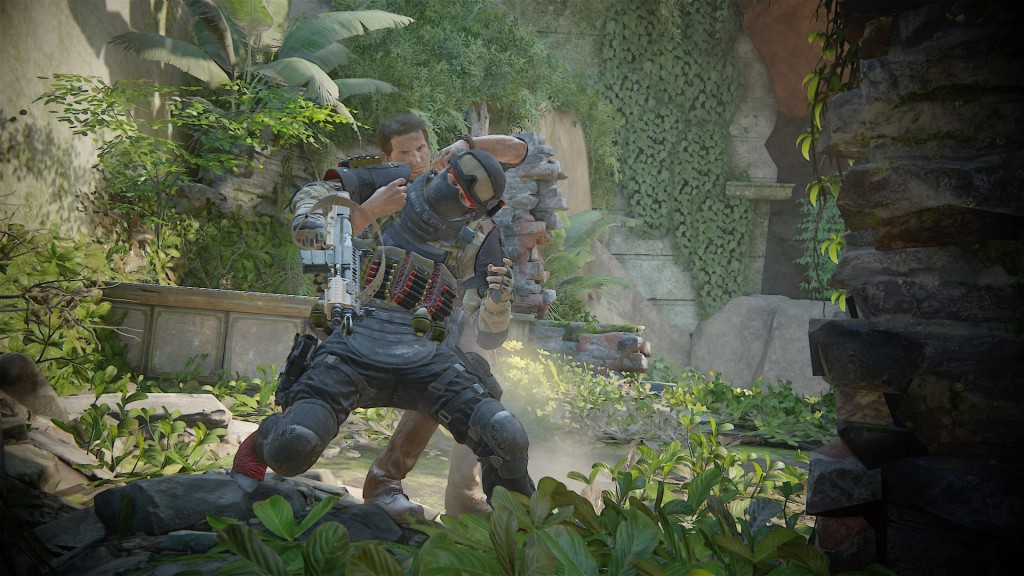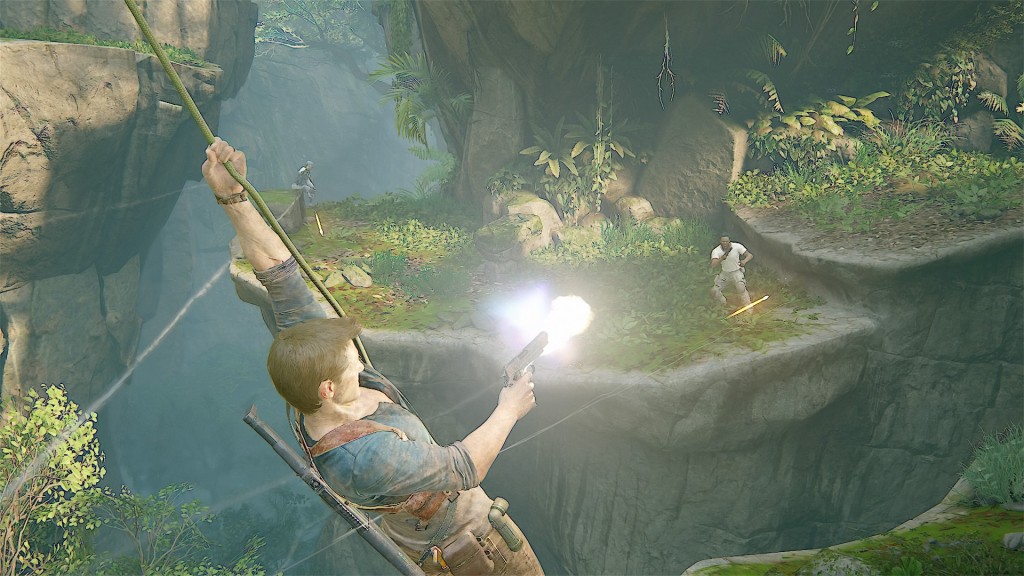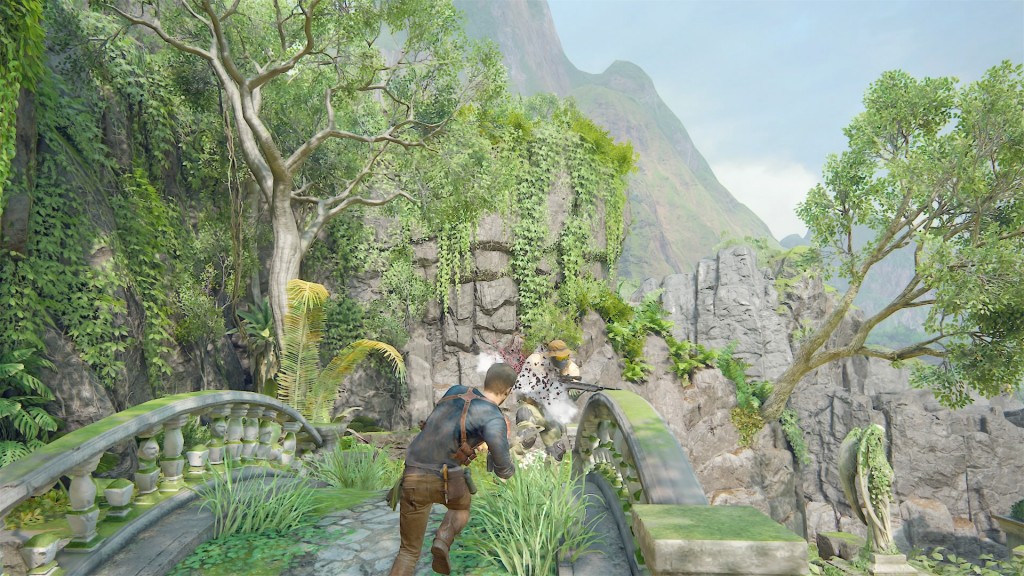So, I thought it would be nice to share some relevant content that caught my interesting. I recently came across this interview with Bethesda Softwork’s director and executive producer that give great insight into Bethesda as a studio as well as the process of game development and how things work on the larger scale part of game development. You can find a link to the interview below.
Game Jam: UWW 2016 Hackathon
Bleh, it has been a long road from the start of the Hackathon to typing at my keyboard about the event. This was my first game jam and I was awake a full 24 hours (and beyond), I got sick, and wrecked my sleeping schedule all in order to make a game that only ended up being partially finished. I wouldn’t change a thing. Even with all of its drawbacks, the experience was extraordinary and I wouldn’t trade it for anything.
Forgive me if this post is a little rambly and all over the place and less professional than some of my other posts. I’m still dealing with the aforementioned sickness and lack of sleep which, surprise! Makes it really hard to think straight.
Anyways, the beginning is probably the best place to start. Our team consisted of 3 programmers/designers, a narrative designer (me), and a visual artist. We trekked together over the hall in which the event was being held and set up all of our computers and various equipment in one of the rooms. We brought a coffee machine which proved to be an excellent morale booster. Anyways, the premise for our game was a series of short and easy to understand mini-games that up to four players could pick up and play. We started with an original goal of making 10 mini games, but ended up scaling back to 5, and then down to 3 games as our deadline grew nearer and we continually ran into various problems or issues that bogged down progress. The programmers tell me that the back-end programming, as well as programming for 4-players, was a real pain.

The game was called Mini Mages and its narrative premise was that of four novice mages applying for an apprenticeship with a renowned grand mage. A lot of the content I had written for the game didn’t make it due to time constraints, but that’s just game development. Things will always have to be cut for the sake of deadlines and or other restrictions. Speaking of restrictions one of the ones I found challenging while writing for the game was my restriction on the length of content. We wanted the game to feel fast-paced and frantic and we wanted to use a typewriter effect that scrolled text in. Combined with the limitation of having the screen with text appear for a limited amount of time to keep with the quick pace of the game all of my written content had to be around 100 – 120 characters. Not words, characters! My skills to write with brevity were pushed to limits. (Unlike now where I’m just spewing info at you.) It was hard, but it got done eventually. After that, I spent the rest of the night supporting the real heroes (our programmers and visual artist) by looking for free audio we could use, due to a lack of time to create our own, and by making sure everyone was stocked with snacks, coffee, and energy drinks.
Anyways, long story short it was a lot of fun. We made 3 mini games for our game and we got 3rd place out of the other competitors. All in all, not a bad day/night.
I’d highly encourage you to look for game jams in your area and or create your own. They’re great fun especially when you’re surrounded with your friends and working on something that you are all greatly passionate about.
Now I am going to resume sleeping in hopes that eventually I’ll wake up without a headache or feeling sick in general.
P.S. Still worth it
By the way here is the video of our presentation:
https://www.youtube.com/watch?v=SHdUVcHGy7g
Game Jam: Hackathon
You’ve probably noticed a lack of content on the blog for this week and are missing your usual Friday content. We’ll worry not, it’ll be coming just a little later than expected. I’m going to be participating in an event on my campus called a Hackathon. It is essentially a game jam, but it offers slightly wider options on what you can produce. Any kind of software is acceptable including apps, programs, and games.
Over the course of 17 hours starting at 6pm my time we’re going to be hard at work trying to create a game and I’m going to try and document some of the experience for you all in a feature article of sorts. I might try making some more video content for the event as well. We’ll see what I have when it’s all said and done.
So in essence, that’s why our regular content will be a little later than expected this week.
Before I go to get prepped for the event I’d highly encourage you to try and start an event like this in your area or community or join one of the many online game jams that you can find across the net.
The global game jam is coming up January 20th and would be a great game jam to participate in. Events like these give budding designers experience, team-building, and the ability to network with other designers and are a great resource. Definitely, don’t miss out on them if you have the opportunity.
Game Vlog: Bethesda & World Design
I decided that it would be nice to branch out and try delivering content in a video format. I’m very new at recording and the whole process of creating and narrating video content. So, if you have any thoughts or suggestions please let me know in the comment section below. And now with no further introductions, I present you with The Game Libary’s first video:
https://www.youtube.com/watch?v=FHWn4DSrTbY&feature=youtu.be
Game Blurb: Do All The Things!
written by Ian Hertzberg
Okay, so this is going be a short and sweet post, but an important one none the less. Do all the things! Seriously, do stuff lots of stuff. Learn stuff, go places, see things, it is incredibly important that you do. Why? Because knowing more and having experienced more give you more to draw on when making a game.
If you read my article about experiences (if not check it out: here) then this should be starting to sound a little familiar. Tons of game designers draw on personal experience when making work. Experiences that the designers went through or felt physically or emotionally have helped create truly great games, but you can’t have those experiences to draw on if you don’t have many experiences.
That being said, learning is an experience too and learning a little about a lot of different subjects can really help to inspire your designs. When I write fiction mythology, world history, and culture have a huge influence and inspire me on a regular basis.
So, what I’d urge you to do is go out into the world like it was some sort of open-world RPG sandbox and interact with it. Travel to new places, taste new food, meet new people, do something new, have experiences. It’ll help you grow as a designer and it’ll help you grow as a person too.
Also, if you think that learning more about mythology and classical literature would be a cool way to expand your knowledge then I highly recommend giving Overly Sarcastic Productions a look. They’ve got great summaries of classical literature and myth with an extra dose of humor and wit. Seriously give them a look.
As always feel free to leave a comment below and let us know what’s up. I’m always interested in the thoughts and opinions of others.
Game Blurb: World Design & Fallout 4’s Settlements
written by Ian Hertzberg
So, do you own a copy of Fallout 4? Chances are that you do; it sold pretty well. If so, you can use it to practice a little bit of game design and chances are you already have. Fallout 4’s settlement mode is a great tool for practicing a little bit of world design. The mode allows you to place various objects and create various structures within a set area as well as populate these area’s making them a place to live. If you’ve been using the settlement system you’ve been practicing world design without even knowing it. Neat, right!?
But how can you learn even more from Fallout 4’s settlement mode? By using it knowingly. When you’re building settlements incorporate design philosophy into your builds. A good place to start is by analyzing how Bethesda has created a lot of other areas in Fallout 4. Pay attention to the aesthetics of the design. Most of the buildings look fairly ramshackle and poorly built. This is a post-apocalyptic setting after all and the people living in the wasteland don’t have access to proper tools or equipment and have to make do with what they have. So, maybe you could try and mimic that kind of design philosophy yourself throughout your various settlement builds. For instance, if you’re building in a settlement that’s near a train yard maybe you could use train boxcars as part of your design, maybe you could turn those boxcars into shops and home for various settlers. Near a location that contains a lot of demolished cars? Then maybe try building structures out of old tires and scrap metal.

With a design philosophy pertaining to realism, you would want to think about what objects make up the structures in your settlement, how your settlers got those items, and how practical their use would be. I, for instance, tend to build walls around my settlements using elements of resources prevelant in the surronding areas. For example, at the Red Rocket Gas Station settlement, I used buses and truck trailers to make up portions of the wall surrounding my settlement I then made the inside of these settlements double as a home as I could see my settlers using them as such. But, that’s just using a design philosophy built around realism in terms of the world you’re building in. I could think of a couple other philosophies you could use when building a settlement, such as one based around making outlandish and unique structures, or another design philosophy based solely on how much utility and function structures provide your settlers.

I tend to like the idea of designing with realism in mind because of the limitations and challenges it puts on building things and I think it is a great exercise in world design. If you’ve played a lot of previous Bethesda Softworks styles you’ll notice that they have a ton of really believable areas in their world because they do think about the overall environment and the world their building in, but that is an article for a future date.

P.S. One more tip for Fallout 4’s settlement mode before I go. Try not to overuse a particular asset if you can. Too much of one asset repeated over and over tends to break the overall vibe of realism and doesn’t have nearly as much aesthetic appeal as something that uses variety. If you’re looking for tips on building Fallout 4 settlements in general, I highly recommend checking out the youtube channel: No Respawns. He does a great job at creating some believable and innovative settlements.
So go out and give building a settlement using a design philosophy a try also if you like the kind of content I’m putting out feel free to leave a comment below.
Game Blurb: Learning Game Design with D&D
written by Ian Hertzberg
This article is going to be talking about pen & paper role-playing games such as D&D. If that all sounds like a load of jargon to you might I suggest taking a look at one of my previous articles: D&D and Modern Game Design.
If this isn’t your first time rolling a D20 or any other kind of funny shaped dice then you’ll fit right in.
So, you want to get experience in narration or design or maybe narrative design but, like me, you’re not a computer whiz who has a decent command over programming languages like C# or Java Script. Well, you’ll probably have to deal with those things someday, but it doesn’t have to be now. In fact thanks to pen & paper role-playing games you can actually start designing right now.
For this article, in particular, I’m going to be using Dungeons & Dragons or D&D as an example, but this applies to any and all pen and paper role-playing games. I’ve just picked D&D for this example because it is what I’m most familiar with and because there is a free lite version of the rules that you can download and use by clicking on this link. The Basic Player’s Handbook and the Basic DM’s Handbook should have downloadables at the bottom of the page.
Okay so you have the rules, but now what? Well reading the Player Handbook and DM Handbook both is a good start. You don’t need to read them cover to cover, although you should read both in their entirety later down the road. For now start by getting a feeling for how the game is run, the introduction section of the player handbook is a great place to start as it acts as an overview as to what D&D is. You’ll also want to keep these on hand when you play to consult the rules.
(Sidenote: I almost forgot, but you’ll need to pick up various polyhedral dice: a d6, d8, d10, d12, and a d20. You can get these at a local game store or download one of the free dice apps on either the android or ios app stores)
Okay, so now that you’ve looked over both handbooks maybe you’re starting to see how this could lead to learning about narrative and design. Dungeons and Dragons is a series of systems you can use to create not just a story, but an experience that is realistic in the fact that it simulates a universe governed by various laws and properties not too dissimilar from our own and allows players to interact with that universe in any way they see fit. Open world sandbox games attempt to do the same thing. So in essence, DM-ing a Dungeons & Dragons Game is like being the designer of your own open world sandbox game. Neat, right!?
As a DM you’ll be the judge of the rules as well as create the games: setting, non-player characters, determine loot, create combat encounters, traps, puzzles, ect. Most of those fall under aspects of game design. So, what I would encourage you to do, starting out, is focus on the aspects of design that interest you the most the ones you are really good at working with.
What do I mean by that? Well, I mean focus (initially) on the elements in games that you love the most. I’m a fan of narrative, so I’d make a narrative-heavy adventure with a grand over-arching plot, a cast of colorful characters, vibrant locals, and maybe some romance for good measure. You, on the other hand, might really love games like Dark Souls with really tight level design and grueling, but not impossible combat encounters. So, you’d then focus on creating an adventure with plenty of traps and difficult encounters with monsters using grid paper and battle mats to map out the exact positioning of each monster and trap. And if you’re the kind of person that likes to design mechanics over experience then try and change the rules a little bit or create a new class. Playtest them with friends and try and figure out what’s fun and what’s broken.
Remember, this is just where you start, you’ll want to work on all aspect of design in a campaign as you will have to work with all of these aspects and make them work together in a cohesive manner in order to create a truly great experience. And don’t feel bad if you’re lacking in one area or another; we all have our strengths and weaknesses. That’s why there are often multiple designers working on a game and why dev teams have the various leads that they do. Focus on just becoming proficient in all aspects of design, not perfect, practice makes that, or so I’m told.
Thanks for reading the article. I hope this inspires you to try playing pen & paper role-playing games and use them as a tool for learning game design while also having fun. If you’re having trouble making a campaign or just want to know more about D&D and how you create and run games I’ll post a few resources below that’ll be able to help you out.
As always leave your thought and opinions in the comments.
Resources:
Dungeons & Dragons Official Website
Game Blurb: D&D and Modern Game Design
If you’re interested in game design chances are this isn’t the first time you’ve heard of Dungeons & Dragons (D&D for short) or pen and paper roleplaying games, but you may not know the important role that they play in the history of game development and design that makes them relevant to the games industry today.
Way, way back, in a mythical era, called the seventies, two guys, Dave Arneson and Gary Gygax, played a miniature wargame called, Chainmail, with supplemental rules for a fantasy setting created by Arneson. The game took place in Gygax’s basement and when it was over the two began collaboration on the world’s first pen and paper roleplaying game: Dungeons & Dragons.


In case you’re not familiar with the terminology pen & paper games are games that do not require a specific board or game pieces with the exception of various dice. You can use other objects such as game boards and miniature figures if you wish, but they are not needed.
D&D itself is a pen & paper roleplaying game, in which players create a character of various races and classes that represent them in the game. Players then use these characters to interact with a world (usually of the fantasy genre) created by a DM or Dungeon Master. The game itself provides rules or systems for how players can interact with the game’s world and whether or not their attempted actions fail or succeed. In short, the rules govern the chance of success of any action based on stats assigned to the player’s characters.

If this system seems familiar to those you find in roleplaying games it’s because D&D’s systems were the inspiration for a ton of different video games. Modern game series like Dragon Age or Pillars of Eternity pull heavily from these systems and other games pull individual mechanics out of this system and use them in their games.
Here are just a few:
CHARACTER CREATION
Assigning attributes point, skills point, having feats or abilities, these mechanics found in many roleplaying games and even some non-roleplaying games all stem from D&D originally. Even the concept of having a class that outlines your characters abilities or being able to play as various races that appear in literary works of Fantasy such as, J.R.R.Tolkein’s, Lord of the Rings.

COMBAT

In the mid 90’s to early 2000’s Wizard’s of the Coast, D&D’s publisher, worked with video game developers to make games that were a direct port of D&D’s mechanics and rules.
Modern games still, to this day, often utilize various elements from D&D’s combat mechanics. Whenever you see combat damage as an integer greater than one number and lesser than another you can thank D&D and the use of dice rolls to determine varying factors such as damage or a character’s chance to hit. Any time you see the term “critical hit” or critical damage you can thank D&D’s critical hit mechanic that grants players bonus damage for rolling a ’20’ on a 20-sided die. The idea of “leveling up” comes from D&D too. Players gather experience points as they interact with the world and gain more experiences. Once a player has enough points they “level up” and are able to increase varying stats and abilities of their character.
STORY / NARRATIVE
D&D was one of the first games to feature branching narrative or multiple narrative paths. Not only can DM’s plan for branching narrative and construct it before players sit down for a session, but DM’s can change the story on the fly based off of player’s choices creating a fluid and believable world.
This is one category in which D&D has a strong competitive edge and one of the reasons I believe it is still so popular today. D&D’s open systems and rules allow for unprecedented freedom in the choices of its players and allows them to truly play a role in shaping the story versus choosing between ‘Choice A’ and ‘Choice B’ as we do in so many other games today.
These are just a few of the ways D&D has played a role in shaping the modern game industry and without it I believe the games we play today would be radically different. So, next time you land a critical hit in World of Warcraft, create a new character in Destiny, level up in Skyrim, or choose between several different dialogue options in Mass Effect remember the game that pave the way for it all: D&D.
Case Study: Fallout 4 A Clash of Narrative & Design
written by Ian Hertzberg
First off, before people accuse me of bashing Fallout 4 I ‘d just like to say that I love the game and I am one of the biggest Bethesda Softworks fanboys that I know, but just because you love something doesn’t mean you can’t be critical of it. (Sidenote: Do not apply to friends and family)
Fallout 4’s narrative starts off with your character’s life and family being shattered by total atomic annihilation. Your hometown is destroyed, most of the world population dies, your spouse gets murdered, and your son gets kidnapped while you are forced to watch helplessly from the sidelines. It is a pretty hard-hitting and emotional opening. As your character ascends into the world from Vault 111 there is a definite sense of dread and loss as you look upon your neighborhood, Sanctuary Hills, and the rest of the commonwealth of Massachusetts in complete and utter ruin. The game guides you through a couple tutorial-esque missions before giving you direction to head to a place called Diamond City to search for your lost son, and then . . . Fallout 4 derails its own narrative.
Fallout 4’s world is huge and expansive with plenty to do, such as side quests, exploring unique locations, looting, crafting, joining a faction, and creating and helping various settlements in the wasteland. For me and a few other people who’ve played the game this all ended up taking precedences over finding your missing son. Your missing 1-year-old son lost in a post-apocalyptic nuclear wasteland filled with, raiders, cannibals, mutants, ghouls, and a million other horrors. You’re telling me that a parent that awakens 200 years after the world is nuked to hell would rather be saving total strangers, building settlements, or taking a scenic tour of Walden Pond? I think not!
If it was my actual child I would have torn ass to Diamond City first chance I got and Fallout 4 gives you the means to do just that. Within the first hour or so of gameplay they hand you Power Armor and a minigun. More than enough protection for you to make it to Diamond City in one piece but, instead most players, myself included, seem to find themselves wandering around exploring the huge and expansive world Bethesda has created. Which is great! Bethesda’s believable world building and design are some of the things that make their games truly unique and special, it is what makes Bethesda such a popular and beloved game development studio, but the same thing that makes them great hurts the genuinely great narrative created for the game.

Every bit of Fallout 4’s gameplay and design urges most players to go and explore and do whatever they will in its open world, but it creates a disconnect with the motives of the protagonist Bethesda created. However you play your character, whether you help the people of the wastes or pillage and steal, there is no getting around the fact that your character was written with the desire to find their son and track down their spouse’s killer. Your character will unavoidably say so at multiple points. This takes away the freedom players had in previous Bethesda titles where their character was more or less a blank slate that could be whoever they wanted. In Fallout 4 you can act as you want, but your character’s initial goal is finding their son, no matter what choices you make. You are forced to play as a character that constantly reminds people of their desire to find their son, but instead does a million other things such as helping or robbing total strangers, building settlements, or salvaging crafting materials, because that’s what the player naturally wants to do. The person behind the controller isn’t going to care nearly as much about the virtual baby that only got a few minutes of screen time before being stolen, but the character definitely should and that emotion should transfer to the player, it should invest them in their troubles, that’s when stories are at their best and where video games have great potential for emotional storytelling.
This conflict could be resolved in a few ways, either you make the player want what the character wants, which would involve making the player far more emotionally invested in their family from before the war. If players could have spent more time with their character’s spouse and child before the bombs dropped they would might care about them and have a stronger sense of urgency to match that of their character.

Another method is designing the game in a way that what the player wants to do becomes essential to accomplishing the main character’s goal. For example if Power Armor and other great equipment wasn’t handed out at the beginning of the game you’d be forced to explore and scavenge to prepare for your journey to Diamond City or if there was a series of challenges that were essential to reaching Diamond City other than just reaching the city itself that would have made the game’s narrative much stronger because players would have done what they wanted to do as part of the mainstory. The impulses of the player would have been incorperated more clearly into the plot.
Lastly, you could remove the urgency from the story, which would probably ruin the current story or involve the creation of a completely different story, but it would solve the problem. If you knew for sure that your son was safe for the time being or if Fallout 4 narrative went in a different direction that didn’t involve the whole missing child angle. There would be no disconnect you’d be free to establish your character’s own agency and desires
Now, I’m not saying that this ruined Fallout 4, the game is still fantastic, and in my opinion an all around great game that deserves all the critical praise it has receiving, but I believe that with a few tweaks Fallout 4’s narrative could have been so much more emotionally rich and engaging to players with a more cohesive meld of the games narrative and its design.
So, what do you think? Am I being way too nit-picky? Do you find issue with Fallout 4’s story like me? Are they the same issues or different ones? Let me know what you think in the comments section.
Hmm . . . Now, that I think of it Fallout 3, in a way, did all of the things I talked about in this article. They made the player care about the character’s objective, they made what the player wanted essential to completing the character’s goal, and they didn’t create a story that forced urgency on the character, but that . . . is an article for another day. Thanks for reading!
Case Study: Uncharted 4’s Design
written by Ian Hertzberg
Ha! You thought I was done talking about Uncharted 4, didn’t you? Well, like two star-crossed lovers, I cannot stay away. That and I promised to write a second article about Uncharted 4, but that’s beside the point.
If you haven’t read my previous article you can find it here. It discusses both the narrative design and themes in Uncharted 4: A Thief’s End.
I had to write another article because the narrative elements aren’t the only thing about Uncharted 4: A Thief End that are worthy of merit. The gameplay saw some great changes and there were one or two nice set-piece gameplay moments that worked to the game’s benefit.
Gameplay / Mechanics
Uncharted 4 adds a couple of new mechanics or gameplay pieces to spice up the game and give players something new and unique for this entry in the series.
For one, stealth gameplay has been expanded upon. Uncharted 4 stealth gameplay allows you to track enemies and go in-and-out of stealth. Enemies now have a UI elements to indicate their awareness of the player as well. The addition of this works well for the game thematically as Drake as aged and matured a great deal since the beginning of the series and would most likely utilize stealth in order to more safely defeat enemies. At times the stealth felt a little cheap as I could avoid and dispatch enemies with ease negating what could have been a fun and interesting gunfight, but at the same time having that option in how you approach that situation is freeing and creates a more realistic and grounded feel to combat.
Another new gameplay addition is the grappling hook, which adds a great deal of fluidity to combat. I had a blast swing through areas of the game like Tarzan while shooting, tossing grenades, or dropping down, fist first, on enemies. The grappling hook is also used for general traversal and to solve some clever puzzles, but let’s be honest the best part is the drop punch.
Lastly, we have the vehicle gameplay, which was utilized for specific set-piece moments of the game. Finally, Nathan Drake gets to drive! In previous entries any sort of vehicle chase scene would involve someone else behind the wheel while you jump from vehicle to vehicle, fighting bad-guys, but in this entry you finally get to take the wheel yourself and it feels good. Driving through the chase scenes added a new level of tension and freedom allowing me to dart in and out of various alleyways and even ram enemy vehicles. That being said vehicles weren’t just applied to chase scenes. They were also applied to exploration.
Design
The new vehicle gameplay ties in with an element of design that is new to the Uncharted series and that is of openness. While the game may not be open world it has been designed with much more exploration and multiple routes to the player’s object which makes traversing the world feel much more improvised and realistic. This goes into everything from driving your car around a volcano in Madagascar, to haveing many more handholds and foothold when climbing terrain. This give creates a good illusion of being open even though the paths will all eventually diverge into and head to the next part of the story.
The other major change of design philosophy when it comes to Uncharted 4 is its pacing. Previous entries would feature a great deal of combat combined with high-action set pieces and then a smaller portion of platforming and puzzle solving. Uncharted 4 is set with a reverse pacing where action is built up to instead of just a constant. This entry focuses more on narrative pieces, exploration, puzzles, and platforming. There has been a significant decrease in the amount of combat encounters and it serves the game well giving it a pacing more akin to films such as Indiana Jones which served as an inspiration for the Uncharted series.
The new pacing works well as it focuses and highlights the area of the game that shine such as the narrative elements and platforming. It also allowed for more precise and tightly built combat encounters that make great use of the environment.
Lastly, I wanted to just point out one little moment I thought was cool in terms of design. At one point Drake is trying to climb a cliff face in the rain while injured from a recent wreck. So while I was trying to climb this cliff face I would try to jump from one handhold to another as I’m used to doing, but I couldn’t I would stumble and nearly die as a result. The game instead forced me to slow down and carefully grab nearby handholds without jumping which I previously didn’t even know was a feature. I thought it was an interesting piece for that moment as the gameplay mimicked the character having lesser mobility in that situation.
Conclusion
Uncharted 4: A Thief’s End adds a new and exciting gameplay elements that help the game a meld really well with the overall design philosophy of the game. The new pacing really helps create a cinematic feel to the game and highlights the elements of the game that really shine. The new openness adds to the immersion and fluidity of the game creating a more natural feel in how you do everything from transversing environments to fighting enemies. Due to these improvements Uncharted 4: A Thief’s End is a great game and in my opinion the best in the series. Naughty Dog was right to make this the final chapter of Nathan Drake’s saga as it is the best one yet.
As always feel free to comment in the section below. I’m always interested in seeing feedback from readers and hearing new opinions.
